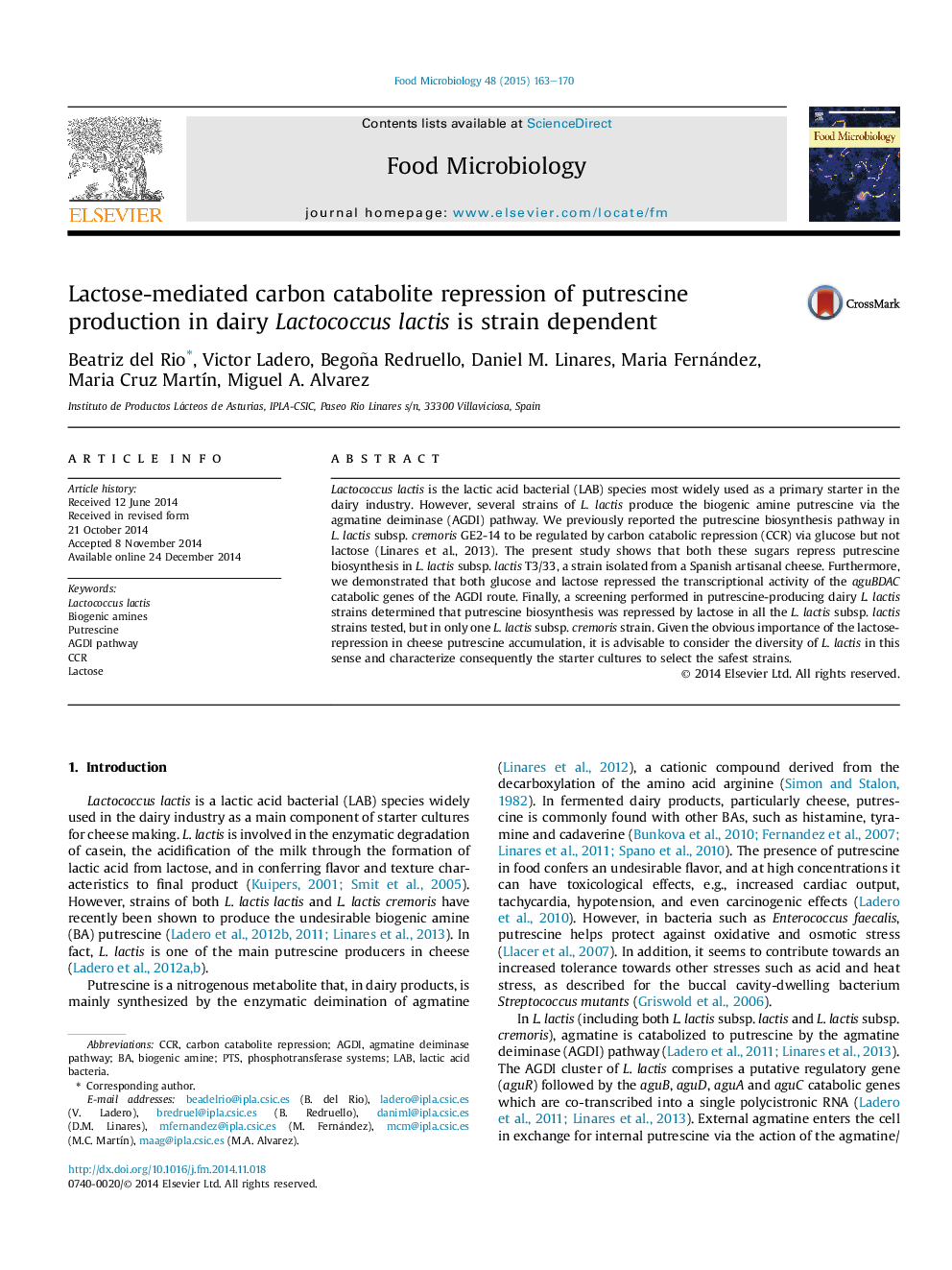| Article ID | Journal | Published Year | Pages | File Type |
|---|---|---|---|---|
| 4362800 | Food Microbiology | 2015 | 8 Pages |
•High glucose or lactose concentrations repress the production of the undesirable biogenic amine putrescine in Lactococcus lactis subsp. lactis T3/33.•Putrescine production in L. lactis enhances bacterial growth and alkalinizes the medium, effects that are also inhibited by glucose and lactose.•Glucose and lactose inhibit the L. lactis AGDI route at the transcriptional level.•Carbon catabolite repression of putrescine biosynthesis by lactose – the available sugar in dairy fermentations – is strain-dependent in L. lactis.
Lactococcus lactis is the lactic acid bacterial (LAB) species most widely used as a primary starter in the dairy industry. However, several strains of L. lactis produce the biogenic amine putrescine via the agmatine deiminase (AGDI) pathway. We previously reported the putrescine biosynthesis pathway in L. lactis subsp. cremoris GE2-14 to be regulated by carbon catabolic repression (CCR) via glucose but not lactose (Linares et al., 2013). The present study shows that both these sugars repress putrescine biosynthesis in L. lactis subsp. lactis T3/33, a strain isolated from a Spanish artisanal cheese. Furthermore, we demonstrated that both glucose and lactose repressed the transcriptional activity of the aguBDAC catabolic genes of the AGDI route. Finally, a screening performed in putrescine-producing dairy L. lactis strains determined that putrescine biosynthesis was repressed by lactose in all the L. lactis subsp. lactis strains tested, but in only one L. lactis subsp. cremoris strain. Given the obvious importance of the lactose-repression in cheese putrescine accumulation, it is advisable to consider the diversity of L. lactis in this sense and characterize consequently the starter cultures to select the safest strains.
